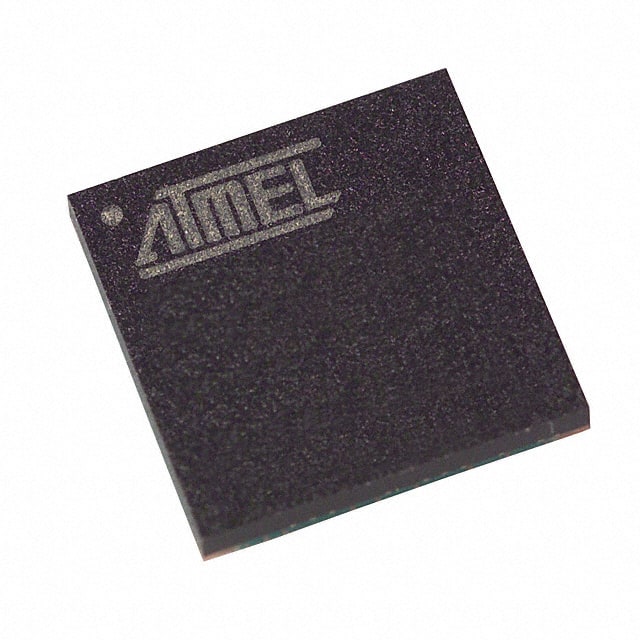Xem thông số kỹ thuật để biết chi tiết sản phẩm.

AT89C51CC03C-7CTIM
Product Overview
Category
AT89C51CC03C-7CTIM belongs to the category of microcontrollers.
Use
It is commonly used in various electronic applications that require a microcontroller for processing and controlling functions.
Characteristics
- High-performance 8-bit microcontroller
- Low-power consumption
- Wide operating voltage range
- Integrated flash memory for program storage
- Multiple I/O ports for interfacing with external devices
- On-chip timers and counters for precise timing operations
Package
AT89C51CC03C-7CTIM is available in a compact and durable package, suitable for surface mount technology (SMT) applications.
Essence
The essence of AT89C51CC03C-7CTIM lies in its ability to provide efficient and reliable control and processing capabilities in electronic systems.
Packaging/Quantity
This microcontroller is typically packaged in reels or trays, with a standard quantity of 2500 units per reel/tray.
Specifications
- Architecture: 8-bit
- CPU Speed: 33 MHz
- Program Memory Size: 64 KB
- RAM Size: 2 KB
- Number of I/O Pins: 32
- Operating Voltage Range: 2.7V to 5.5V
- Operating Temperature Range: -40°C to +85°C
- Data Sheet: Link to Data Sheet
Detailed Pin Configuration
- VCC - Power supply voltage
- GND - Ground reference
- P0.0 - Port 0, Pin 0
- P0.1 - Port 0, Pin 1
- P0.2 - Port 0, Pin 2
- P0.3 - Port 0, Pin 3
- P0.4 - Port 0, Pin 4
- P0.5 - Port 0, Pin 5
- P0.6 - Port 0, Pin 6
- P0.7 - Port 0, Pin 7
- P1.0 - Port 1, Pin 0
- P1.1 - Port 1, Pin 1
- P1.2 - Port 1, Pin 2
- P1.3 - Port 1, Pin 3
- P1.4 - Port 1, Pin 4
- P1.5 - Port 1, Pin 5
- P1.6 - Port 1, Pin 6
- P1.7 - Port 1, Pin 7
- P2.0 - Port 2, Pin 0
- P2.1 - Port 2, Pin 1
- P2.2 - Port 2, Pin 2
- P2.3 - Port 2, Pin 3
- P2.4 - Port 2, Pin 4
- P2.5 - Port 2, Pin 5
- P2.6 - Port 2, Pin 6
- P2.7 - Port 2, Pin 7
- P3.0 - Port 3, Pin 0
- P3.1 - Port 3, Pin 1
- P3.2 - Port 3, Pin 2
- P3.3 - Port 3, Pin 3
- P3.4 - Port 3, Pin 4
- P3.5 - Port 3, Pin 5
Functional Features
- High-speed processing capabilities for efficient data handling
- On-chip flash memory allows easy program updates
- Multiple I/O ports enable seamless interfacing with external devices
- Integrated timers and counters for precise timing operations
- Low-power consumption for energy-efficient applications
- Wide operating voltage range ensures compatibility with various power sources
Advantages
- Reliable and robust performance in electronic systems
- Versatile functionality suitable for a wide range of applications
- Easy integration into existing designs due to standard pin configuration
- Efficient power management for extended battery life
- Cost-effective solution for microcontroller-based projects
Disadvantages
- Limited program memory size compared to some other microcontrollers
- Lack of advanced features found in higher-end microcontrollers
- May require additional external components for certain applications
Working Principles
AT89C51CC03C-7CTIM operates based on the principles of an 8-bit microcontroller architecture. It executes instructions stored in its flash memory, processes data from input devices, and controls
Liệt kê 10 câu hỏi và câu trả lời thường gặp liên quan đến ứng dụng AT89C51CC03C-7CTIM trong giải pháp kỹ thuật
Sure! Here are 10 common questions and answers related to the application of AT89C51CC03C-7CTIM in technical solutions:
Q: What is AT89C51CC03C-7CTIM? A: AT89C51CC03C-7CTIM is a microcontroller from the 8051 family, specifically designed for technical solutions requiring advanced control and communication capabilities.
Q: What are the key features of AT89C51CC03C-7CTIM? A: Some key features include a high-performance 8-bit CPU, multiple serial interfaces, on-chip flash memory, integrated timers/counters, and support for various communication protocols.
Q: What are the typical applications of AT89C51CC03C-7CTIM? A: AT89C51CC03C-7CTIM is commonly used in applications such as industrial automation, home automation, robotics, smart energy systems, IoT devices, and embedded control systems.
Q: How much flash memory does AT89C51CC03C-7CTIM have? A: AT89C51CC03C-7CTIM has 64KB of on-chip flash memory, which can be used for storing program code and data.
Q: Can I interface AT89C51CC03C-7CTIM with other devices? A: Yes, AT89C51CC03C-7CTIM supports multiple serial interfaces like UART, SPI, and I2C, allowing easy interfacing with other devices such as sensors, displays, and communication modules.
Q: Does AT89C51CC03C-7CTIM support real-time operating systems (RTOS)? A: Yes, AT89C51CC03C-7CTIM can be used with various RTOS implementations, enabling multitasking and efficient resource management in complex applications.
Q: What programming languages can be used to develop applications for AT89C51CC03C-7CTIM? A: AT89C51CC03C-7CTIM can be programmed using assembly language or high-level languages like C or C++, which offer more abstraction and ease of development.
Q: Can I update the firmware on AT89C51CC03C-7CTIM after deployment? A: Yes, AT89C51CC03C-7CTIM supports in-system programming (ISP), allowing you to update the firmware even after the microcontroller is soldered onto a PCB.
Q: Is AT89C51CC03C-7CTIM suitable for low-power applications? A: Yes, AT89C51CC03C-7CTIM offers power-saving features such as multiple sleep modes, clock gating, and wake-up interrupts, making it suitable for battery-powered or energy-efficient designs.
Q: Are there any development tools available for AT89C51CC03C-7CTIM? A: Yes, various development tools like integrated development environments (IDEs), compilers, debuggers, and programmers are available to aid in the development and testing of applications for AT89C51CC03C-7CTIM.
Please note that the specific details and answers may vary depending on the manufacturer's documentation and the context of the application.

